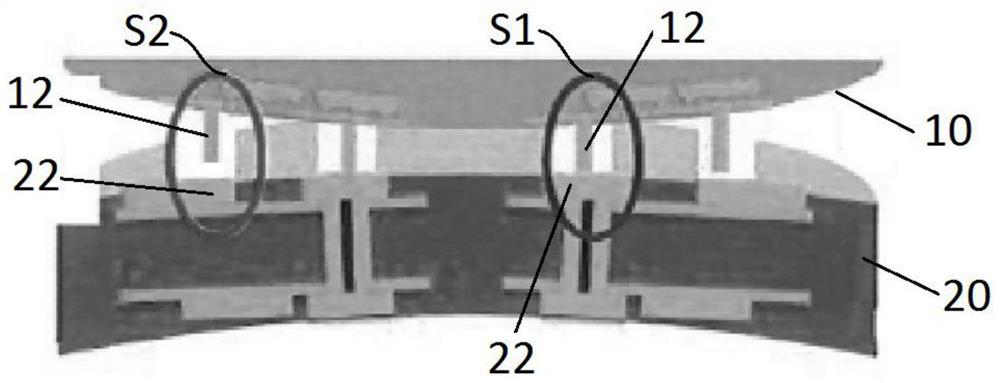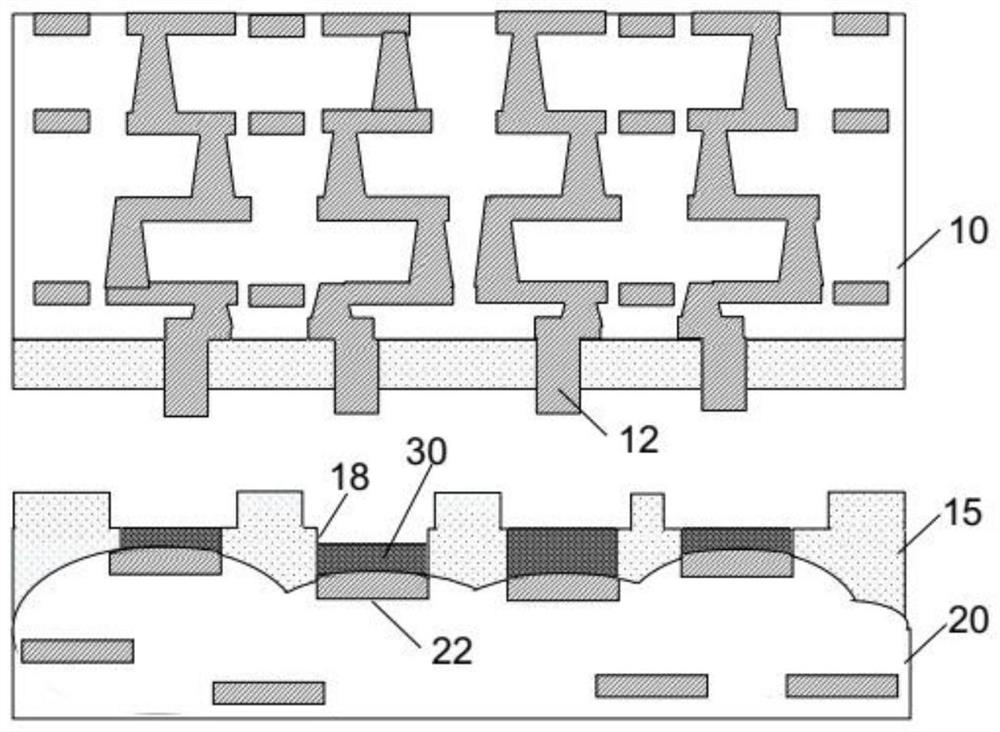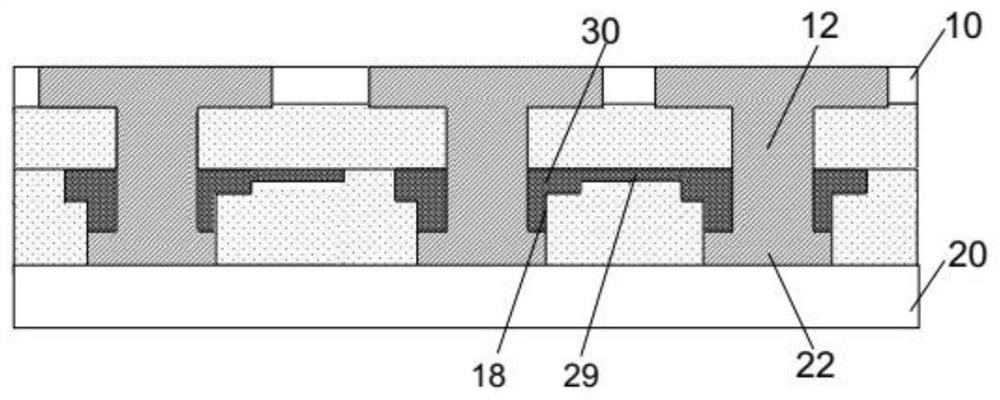Wire structure and forming method thereof
A technology of wires and circuit layers, applied in the field of wire structure and its formation, can solve the problems of not enough to accommodate the conductive material 30, difficult to control the conductive material 30, etc.
- Summary
- Abstract
- Description
- Claims
- Application Information
AI Technical Summary
Problems solved by technology
Method used
Image
Examples
Embodiment Construction
[0035] The following disclosure provides many different embodiments or examples for implementing different features of the presented subject matter. Specific examples of components and arrangements are described below to simplify the present disclosure. Of course these are merely examples and are not intended to limit the invention. For example, in the following description, forming a first component over or on a second component may include embodiments in which the first component and the second component are in direct contact, or may include forming an additional component between the first component and the second component An embodiment such that the first part and the second part may not be in direct contact. Also, the present invention may repeat reference numerals and / or letters in various instances. This repetition is for brevity and clarity only and does not in itself indicate a relationship between the various embodiments and / or configurations discussed.
[0036] ...
PUM
 Login to View More
Login to View More Abstract
Description
Claims
Application Information
 Login to View More
Login to View More - R&D
- Intellectual Property
- Life Sciences
- Materials
- Tech Scout
- Unparalleled Data Quality
- Higher Quality Content
- 60% Fewer Hallucinations
Browse by: Latest US Patents, China's latest patents, Technical Efficacy Thesaurus, Application Domain, Technology Topic, Popular Technical Reports.
© 2025 PatSnap. All rights reserved.Legal|Privacy policy|Modern Slavery Act Transparency Statement|Sitemap|About US| Contact US: help@patsnap.com



